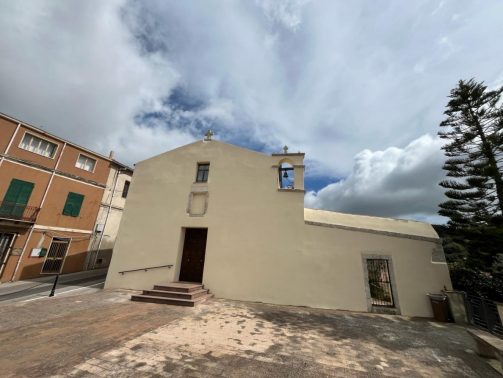The church of Santa Croce stands in the neighborhood of the same name in Ossi and is the seat and center of the activities of the Archconfraternity of the Holy Cross.
There is no certainty about its date of construction, but we can establish that it was built between the late 16th and early 17th centuries, probably on the ruins of an old medieval church. This hypothesis is supported by the fact that the name of the church, as well as the Confraternity, first appears in an administration book dated 1611. The sacred building has since undergone several restorations over time that have changed its appearance, size and style, both inside and out, so much so that there is no clear temporal location as to its origins.
The church has a plain gabled elevation with no major decorations except for the monolith cross placed on top and the gabled bell tower with entablature decorated with a lobed cross and acroteria. The façade also has a central opening equipped with a fixture above the entrance portal.
Inside, the building has a single nave divided into three bays and only two side chapels of modest size. The two semicircular columns and their respective capitals, as well as the pointed arch of the apse, are the only elements that suggest an early Catalan Late Gothic style. Like the rest of the building, the high altar has undergone modifications and renovations, the last of which was in 1911. Many of the particularly valuable sacred furnishings have been lost or destroyed over the centuries, but the statue of the dead Christ surmounting the high altar, the simulacrum of St. Isidore, and that of the Our Lady of Sorrows survive.









